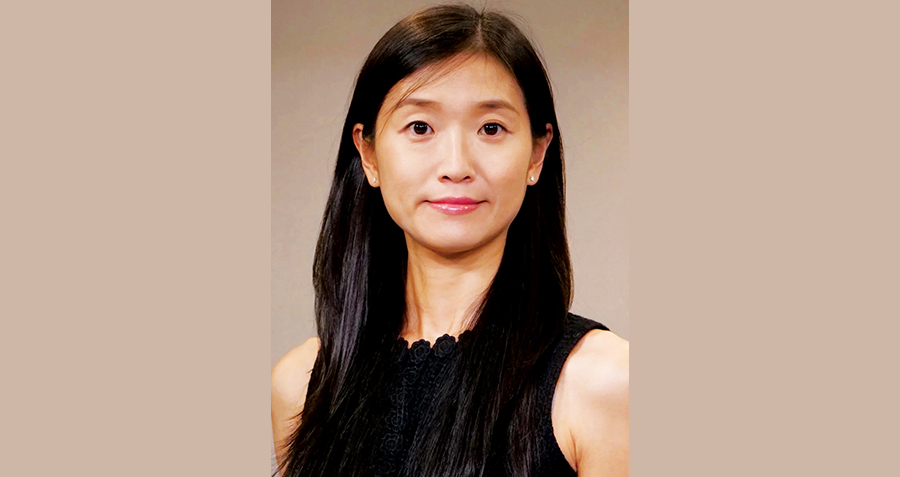One of the major parts of China’s international financial statecraft over the past decade has been the development of the country’s sovereign funds. Using these funds to leverage its foreign exchange reserves, the country has been able to shape global markets, advance the Belt and Road Initiative and funnel state assets into strategic industries such as semiconductors, fintech and artificial intelligence (AI).
In this interview, Zongyuan Zoe Liu, author of Sovereign Funds: How the Communist Party of China Finances its Global Ambitions, discusses the breakdown of China’s sovereign funds, the balance of deployment both domestically and internationally and how the funds are dealing with an increase in investment screening in the US and EU markets.
Q. What constitutes the sovereign funds you discuss in your book and to what degree are they related to China’s forex reserves?
A. The sovereign funds in the book include the China Investment Corporation (CIC), both its international arms, including CIC International and CIC Capital, and the domestic arm known as Central Huijin. The latter was established in the early 2000s for the purpose of stabilizing or recapitalizing Chinese state-owned commercial banks burdened by non-performing loans.
CIC as an institution was capitalized by China’s foreign exchange reserves. But the way it was capitalized was very different from traditional commodity-based sovereign wealth funds, and this is why I refer to China’s sovereign funds not as wealth funds but as leveraged funds. CIC is a good example because the process of setting it up involved the Ministry of Finance issuing special purpose bonds and using the bond proceeds to purchase foreign exchange reserves in order to capitalize CIC. So the whole process involves the use of explicit leverage and the expansion of the government balance sheet.
Aside from CIC, there is also the State Administration of Foreign Exchange (SAFE) which is the foreign exchange management arm of the PBOC. These two make up the state-affiliated sovereign funds.
Q. What is your view on the opinion expressed by some economists that beyond China’s reported forex reserves, state banks also hold significant amounts of forex?
A. The PBOC, in their various statements and press releases, have made it very clear that China uses IMF accounting standards for foreign exchange reserves. This means that foreign exchange reserves refer to the forex assets managed by the monetary authority of a country, in China’s case the PBOC, and those assets are supposed to be invested in liquid and risk-free or low-risk assets. In other words, if these foreign exchange assets are no longer managed by the monetary authority or invested in higher risk or risk-bearing assets or are illiquid assets, they are no longer counted towards the official reserves statistics. Therefore, following this standard, it’s natural that the funds managed by the CIC or SAFE-affiliated investment funds, or for that matter China Development Bank or the Export-Import Bank of China, would not be counted towards official forex reserves.
Q. What is the trendline in terms of the size of China’s sovereign funds and what do you expect the trend to be over the next five years?
A. I think the number of individual funds under the remit of CIC or SAFE will increase, in part because the funds are increasingly being used to finance industrial policy or help SOEs to achieve their purposes internationally. For example, through the SAFE co-financing office SOEs can borrow foreign exchange assets in the form of entrusted loans through designated commercial banks to get the foreign exchange money they need for their overseas M&A, or purchases of factories, mines and other natural resources. This business model of the sovereign leverage fund has led to the relative success of Central Huijin’s domestic operations, as it is now the chief shareholder of more than nineteen state-owned banks, policy banks and insurance companies.
Basically, in the current era when industrial policies are becoming more widespread and a tool to increase a country’s international competitiveness, the number of sovereign leverage funds is going to increase.
The size of assets under management (AUM) is also probably going to increase. When it was established, the CIC’s initial capitalization was around $200 billion, but now it has expanded to somewhere closer to $1 trillion, and it was even at one point in the last few years the world’s largest sovereign fund in terms of AUM. It is now number two, but its assets are still approximately the size of Saudi Arabia’s GDP.
The other caveat here is that a very large amount of CIC’s total AUM is under the purview of Central Huijin, and Central Huijin is only managing the domestic portfolio, depsite the large size of total assets, it doesn’t mean that they are all within CIC’s international portfolio. And in fact, if you look at that international portfolio, oftentimes it actually underperforms the S&P 500.
Q. What is the balance of deployment, both by region and sector, of China’s sovereign funds and how has that changed in recent years?
A. Both CIC and SAFE have, over the years, developed both domestic investment funds and offshore funds. For SAFE, their onshore investment fund is called Buttonwood Investment Company and it was established for the purpose of capitalizing the Silk Road Fund. Through Buttonwood, SAFE provided about 65% of the initial capital for the fund, which in turn was established for the purpose of supporting the Belt and Road Initiative. This is a very good example of the shift in the function of Chinese sovereign funds. At the start they used forex reserves to capitalize things like Central Huijin for the purpose of preventing a financial crisis within China, and now we have seen the establishment of various funds for the purporse of things like BRI-related projects, so the functions have obviously changed a lot.
In terms of their global portfolio distribution, CIC and SAFE’s international arms, in particular their American and European offices, are focused more on developed economies, and from publicly available resources you can see their investments are very much located in advanced economies such as the US, Canada, Germany and the UK etc. And they are invested in sectors such as public equities, real estate and infrastructure investment funds. However, the more specific funds, such as the Silk Road Fund, are invested mostly in infrastructure projects around the world related to the BRI because that is what they were established to do.
As for the domestic portfolio, Buttonwood has established four domestic investment arms that invest in Chinese public equities as well as supporting Chinese companies at home. But overall, in times of Chinese stock market volatilities such as in 2015, as well as more recently, people talk about the national arms as something that is used to stabilize the Chinese exchanges. The increase in SOE investment into the markets in recent months is not directly driven by the sovereign funds, but the money likely stems from them in the form of forex loans that were previously given to SOEs to support their overseas ventures.
Q. To what extent are the sovereign funds essentially large VC funds and how does the management and visibility of the sovereign funds differ from those of other major economies?
A. The CIC in particular as a brand is very much visible internationally, and they are also a voluntary signatory of the Santiago principle, regarding investment for strategic purposes. But Chinese funds often do invest for strategic purposes and that has become a point of tension, resulting in the increase in investment screening for Chinese investments by the US and EU in particular.
But I think that the SAFE-affiliated funds, from Buttonwood to all the various offices around the world, are not necessarily well-known publicly. Many of them don’t even show up on SAFE’s annual reports. But that does not mean that they are not important and they still manage a huge amount of money.
In terms of to what extent they function as large VC funds, I do think that in certain circumstances, especially for their investments in startups, you can say that they do behave very much like a VC. But unlike VC funds that invest in early stage companies, the sovereign funds, broadly speaking, don’t invest in early stage companies, and are more likely to join in the second round of fundraising or partner with institutional investors such as Goldman Sachs. This is a bit more robust as it provides what is hopefully a better investment opportunity, both in terms of mitigating the investment screening risk and getting the deals done as some companies will be happy to take a longer-term investor, but others may be worried about strategic motivations.
Q. To what degree is some form of relationship with Chinese sovereign funds required for businesses to access the Chinese economy?
A. I would say that it is more desired than required, because the sovereign funds are premier institutional investors in the Chinese market, with a wide variety of connections throughout the system. Meaning that a good relationship with one of the sovereign funds is a ticket into the market as well as providing connections you may not otherwise have. But it’s not something that every business can, or has to, have.
Q. To what extent do you see China’s sovereign fund makeup and strategy changing over the next five to 10 years?
A. In terms of the international portfolio, I would expect to see a shift away from direct investment, with an increase in investing through joint investment funds. We are already seeing this happen in the context of CIC. CIC Capital, which was established for the purpose of making direct investment, has been re-merged back into CIC International because investment screening made this a much less tenable strategy. So we will see a lot of the relatively high-profile Chinese investment funds probably use more joint investment platforms.
On top of that, it is possible that all of China’s sovereign funds are going to establish their own subsidiaries that have less of a public profile, again to mitigate the risk of investment screening.
In terms of geographical distribution, I still think that the US and EU markets are highly desired, but the deals are not necessarily as easily done as before, so perhaps they will shift more towards domestically-oriented investment. Especially now that investing at home is much less of a faux pas.
At the time of the Global Financial Crisis, it was a faux pas for sovereign funds to invest at home because the purpose was to invest counter-cyclically and to diversify away from oil and gas, which would have made up the large majority of domestic investments. But now the funds can be used to finance industrial policy, as they do around the world to some degree, and this will likely be the same for China, specifically in areas such as semiconductors, AI or quantum computing.
Interview by Patrick Body
Bio: Zongyuan Zoe Liu is the author of Sovereign Funds: How the Communist Party of China Finances its Global Ambitions and is also the Maurice R. Greenberg fellow for China Studies at the Council on Foreign Relations (CFR).




















